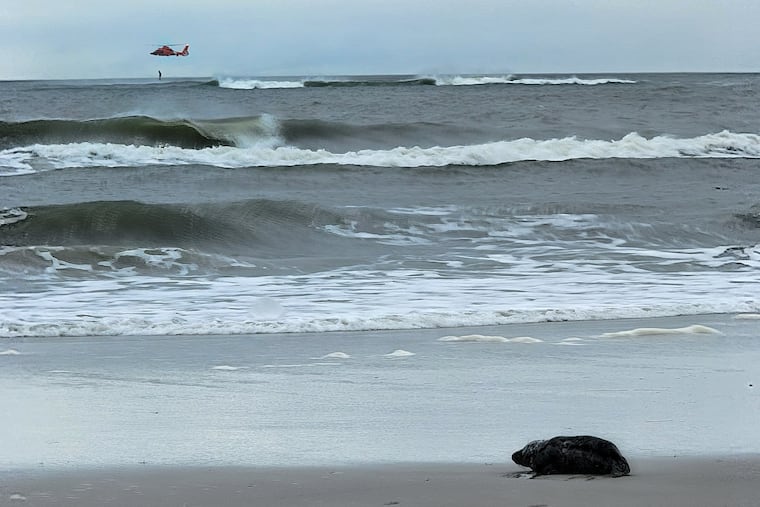Seal rescue surge: Over 20 stranded seals saved on New Jersey shores this season
As New Jersey's beaches become unexpected havens for distressed seals, a wave of rescues shines a light on the urgent need for intervention and support.

A young grey seal pup rescued from Long Beach Island is one of the newest patients at the Marine Mammal Stranding Center in Brigantine, the nonprofit sea mammal rescue organization said.
The center got a call Wednesday that a young female pup was stranded on the beach in Harvey Cedars, according to the rescue’s group Facebook page.
“They discovered that the female grey seal pup was suffering from multiple injuries to all of her flippers, the most severe being a wound on her left rear flipper with some bone exposed,” the post noted.
The seal was taken to the stranding center’s hospital in Brigantine, where staff began tube feeding the pup formula and electrolytes and is now treating her wounds.
This pup is just one of the 21 injured seals found on New Jersey beaches recently and being treated at the stranding center, said Michele Pagel, assistant director with the Marine Mammal Stranding Center.
Others include a male grey seal found on Monmouth Beach a few days earlier, which is currently being tube fed and treated for a possible respiratory infection, the website notes.
“It has been a busy season so far with three different species of seals migrating through New Jersey this time of year: grey, harbor, and harp. This is a normal event that we see every year, with the majority of the seals being recently-weaned grey seal pups,” Pagel said via email. “By the time they reach our beaches, they need their rest, and some pups who have not fared as well on their journeys have needed a helping hand to recover from injuries, illnesses, and malnutrition.”
Why have so many seals been stranded on Jersey beaches?
Gray seal season, the period when breeding and weaning takes place, is between December and April, often resulting in “surges” of pups arriving along the Jersey coastline every winter and spring, Pagel explained. It’s not unusual for the pups to get lost on their way to find food.
This has been a busier seal season than recent years for the stranding center, but not the busiest. The record for the highest number of seals in the hospital at one time was 26 during the early 2000s, Pagel said.
“The annual grey seal pup migration is in full swing with lots of 4- to 6-week-old pups making the long swim, 300 miles or more, from their birthing grounds in New England and Canadian waters to New Jersey,” Pagel said.
It is important to note that it is normal for seals to “haul out” on the beach — it is part of their behavior being semiaquatic mammals — and not every seal is in need of rehabilitative care. Seals need to haul out on land to rest after hunting to digest their food and restore their energy, Pagel said.
Are seals endangered?
Seals are federally protected by the Marine Mammal Protection Act and should only be picked up by trained professionals.
Are seals aggressive? What should you do if you find one?
If you come across a stranded sea animal, stay 150 feet away from them and call the Marine Mammal Stranding Center 24-hour hotline at 609-266-0538. They can become aggressive if provoked or scared.
When seals are admitted to MMSC, they receive veterinary care, diagnostic testing to guide treatment plans, medication to treat illnesses and injuries, and nutritional support. They are then exercised in preparation for their return to the wild.
How to donate
The Marine Mammal Stranding Center is the only federally authorized animal hospital in New Jersey committed to the rescue, rehabilitation, and release of marine mammals and sea turtles.
The average cost to rehabilitate one seal is $3,000, Pagel said.
Donations can be made online at mmsc.org/ways-to-donate, or by mail to the Marine Mammal Stranding Center at P.O. Box 7732, 3625 Atlantic-Brigantine Blvd., Brigantine, N.J. 008203.